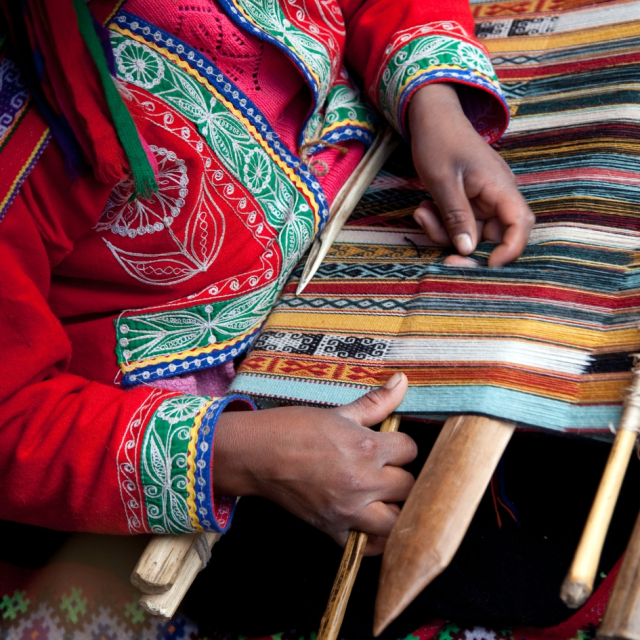Trade in Peru is a fundamental pillar of its economy, playing a crucial role both domestically and abroad. With a strategic location in South America and a rich diversity of natural resources, the country has developed an economy based on sectors such as mining, agriculture and tourism, leading to a vibrant and ever-evolving trade.
Domestic Trade in Peru.
Domestic trade in Peru is dominated by small and medium-sized businesses, which account for more than 90% of registered companies in the country. These businesses are mainly concentrated in local markets and urban centers such as Lima, Arequipa, and Trujillo, where supermarket chains, fairs, and retail stores operate. The informal economy also has a significant weight, especially in rural areas, and constitutes a means of subsistence for a large part of the population.
Among the most traded products domestically are processed foods, textiles, electronic products and everyday consumer goods. Digital platforms have also begun to transform domestic trade, facilitating online shopping and promoting the creation of small digital businesses.
Peru's Foreign Trade.
Peru stands out in foreign trade thanks to its wealth of natural resources. The most important export products include minerals such as copper, gold and zinc, as well as high-value agricultural products such as coffee, quinoa and asparagus. According to data from the Ministry of Foreign Trade and Tourism (MINCETUR), foreign trade represents approximately 45% of the country's Gross Domestic Product (GDP).
Main Export Products.
Mining : Peru is one of the world's largest producers of copper, gold and zinc, and these minerals account for a considerable portion of its exports.
Agriculture : Products such as quinoa, asparagus, blueberries and coffee are in high demand in international markets, especially in the United States, the European Union and Asia.
Fishing : Fishmeal and fish oil are also important exports, positioning the country as a world leader in this sector.
Imports.
Peru's imports include mainly machinery, technological equipment, vehicles, chemical products and consumer goods. The country's main trading partners are China, the United States, Brazil, Chile and the European Union.
Main International Markets.
China : It is Peru's main trading partner, concentrating a large part of mineral exports.
United States : Imports Peruvian agricultural and textile products.
European Union : It is a key destination for organic and fishery products.
Countries in the region : Brazil, Chile and Colombia have trade agreements with Peru that facilitate the exchange of goods and services.
Challenges of Trade in Peru.
Infrastructure.
Although significant progress has been made in infrastructure, such as the modernization of ports and roads, there are still gaps that affect the competitiveness of Peruvian trade. Limited connectivity in rural areas makes it difficult for small producers to integrate into the market.
Bureaucracy and Procedures.
Excessive regulations and bureaucracy can slow down trade, both internal and external. This generates additional costs and discourages small and medium-sized businesses.
International Competition.
In international markets, Peru competes with countries such as Chile and Mexico for similar products. This forces Peruvian exporters to maintain high quality standards and seek innovations to differentiate themselves.
Expansion Opportunities.
Electronic Commerce.
E-commerce has grown exponentially in Peru, especially after the COVID-19 pandemic. Platforms such as Mercado Libre, Linio and other local ones have facilitated the transition of traditional businesses to the digital environment. In addition, the government has promoted initiatives to digitalize commerce and train entrepreneurs in technological tools.
Product Diversification.
Promoting unique and niche products, such as organic foods and superfoods, represents an opportunity for Peru in demanding international markets. Peruvian quinoa and cocoa, for example, are highly recognized for their quality.
Trade Agreements.
Peru has trade agreements with various countries and economic blocs, such as the Free Trade Agreement with China and the Association Agreement with the European Union. These agreements have reduced tariffs and facilitated access to new markets, benefiting both large and small exporters.
Strategies to Strengthen Trade.
Investment in Infrastructure.
The continuous improvement of ports, airports and roads is essential to reduce logistics costs and increase the competitiveness of Peruvian trade. Projects such as the expansion of the port of Callao are steps in the right direction.
Digital Capabilities.
Training entrepreneurs in the use of technology and e-commerce can open up new opportunities for SMEs. In addition, the development of national e-commerce platforms can facilitate the participation of more players in the digital market.
Promotion of Peruvian Brands.
Strengthening the "Peru" brand abroad can increase demand for Peruvian products. Promotional campaigns, such as those led by PROMPERÚ, have been effective in positioning national products in international markets.
The Future of Trade in Peru.
With an economy that combines natural resources, innovation and strategic trade agreements, trade in Peru has a promising future. However, it is necessary to address structural challenges and promote the inclusion of rural sectors and small producers in value chains.
The country also has the opportunity to lead in sustainability, promoting responsible practices that respond to the demands of international markets that are increasingly aware of environmental impact.
Sources consulted:
